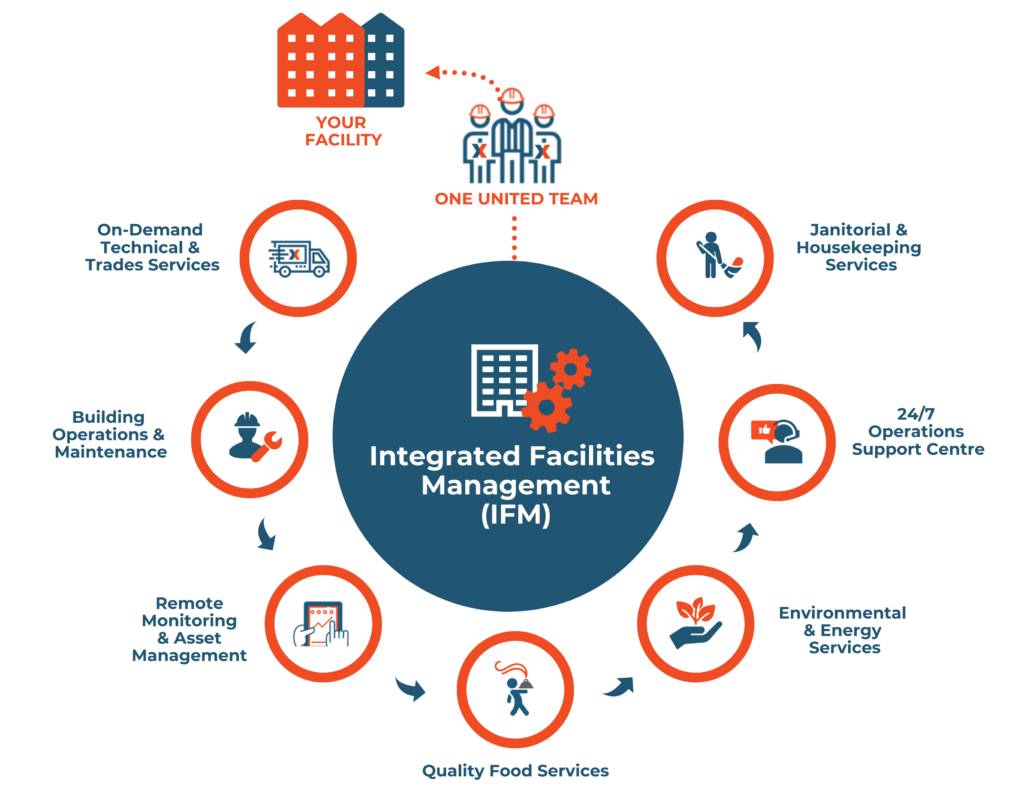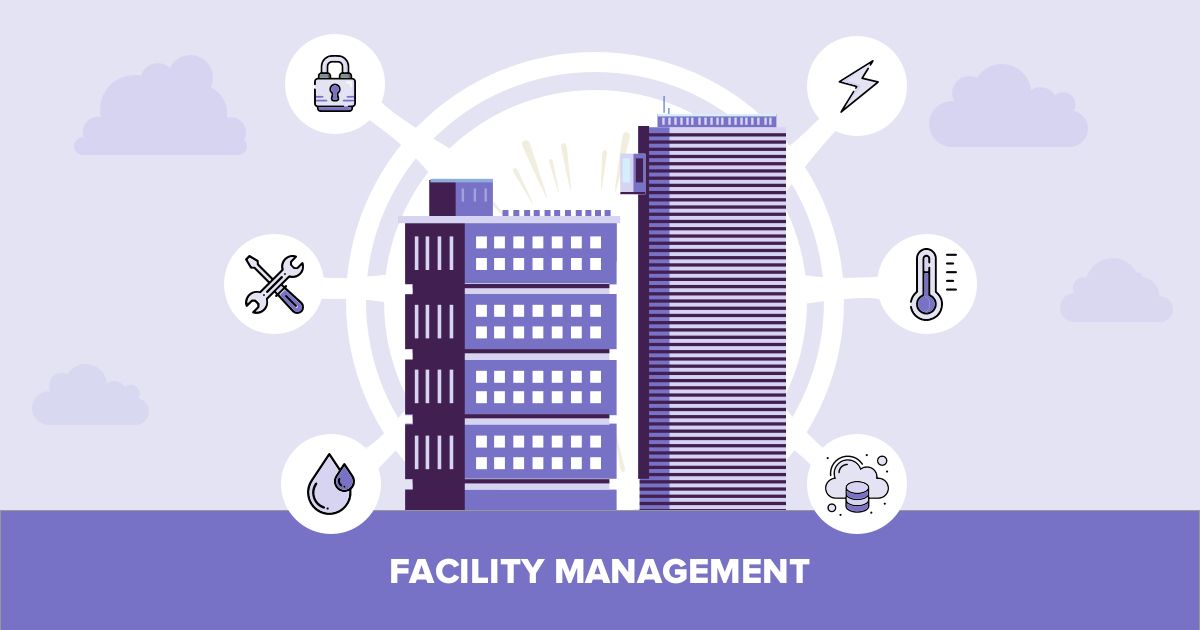Facility Management Trends That Are Shaping the Future of Workplace Characteristics
Facility Management Trends That Are Shaping the Future of Workplace Characteristics
Blog Article
The Crucial Guide to Center Management: Methods for Success
Center monitoring plays a crucial role in the total success of a company, acting as the backbone that supports productivity, performance, and security. By employing calculated approaches such as incorporated technological options and cultivating cross-departmental partnership, organizations can considerably enhance their operational foundations. However, the nuances of effective center monitoring prolong past simple logistics and need a thorough understanding of both qualitative and quantitative metrics. As we discover these important approaches, a closer exam discloses just how they can change not simply facilities, however the very society within a company itself. What might these improvements resemble in method?
Comprehending Center Management
What comprises effective facility monitoring? Effective facility management includes the sychronisation of different business features to make certain that constructed settings are secure, reliable, and for efficiency. Facility Management. It incorporates the principles of design, design, and service monitoring to create a seamless operational circulation within a company
Crucial element of facility administration include space planning, upkeep administration, and compliance with health and wellness laws. Room preparation concentrates on enhancing the usage of physical resources to support business objectives, while maintenance management ensures that facilities are maintained in ideal condition, taking full advantage of life expectancy and reducing operational prices. Conformity with governing and legal standards is essential, as it safeguards the company versus potential responsibilities and improves its reputation.
Additionally, reliable center administration relies on the critical use of technology, such as Building Monitoring Systems (BMS) and Computer-Aided Center Administration (CAFM) devices. These innovations assist in real-time monitoring of structure systems and improve upkeep processes. Inevitably, a detailed technique to center administration not just promotes functional efficiency yet additionally fosters a favorable environment for workers and site visitors alike, driving general business success.
Secret Approaches for Optimization
Optimizing center management requires a calculated approach that lines up functional experiment organizational purposes. To accomplish this, the initial key technique is the application of incorporated technical options. Utilizing innovative software systems permits real-time tracking of center procedures, helping with data-driven decision-making and enhancing total effectiveness.
Secondly, regular assessments of center efficiency are essential. Conducting regular inspections and audits allows center supervisors to recognize locations that require renovation, guaranteeing that resources are designated successfully. This aggressive strategy aids in decreasing downtime and enhancing service delivery.
Another crucial technique is cultivating collaboration across departments. By encouraging open communication in between groups, facility supervisors can much better align their methods with service goals, causing boosted functional harmony. In addition, involving personnel in training programs promotes a culture of responsibility and improves their capability to add to optimization efforts.
Enhancing Safety Protocols
Reinforcing security procedures is necessary for producing a protected environment within facilities. An extensive security procedure not only protects visitors and workers however additionally boosts operational efficiency. To attain this, center supervisors need to conduct routine danger assessments to make certain and identify possible dangers that suitable measures remain in place.
Training and education are critical elements of effective safety and security procedures - Facility Management. Employees need to get ongoing training in emergency situation procedures, tools handling, and personal protective actions. Routine drills, such as fire discharges or lockdown procedures, foster knowledge and preparedness amongst team
In addition, clear interaction networks should be developed to report safety problems immediately. This includes producing an available system for employees to voice possible hazards or occurrences without fear of . Moreover, leveraging technology can enhance safety and security measures; for instance, implementing monitoring systems and accessibility controls assists keep track of center activities and restrict unapproved access.
Lastly, conformity with neighborhood regulations and market requirements is non-negotiable. Normal audits and reviews of safety procedures make certain placement with current legislations and finest methods. By prioritizing these approaches, center supervisors can grow a culture of safety that safeguards all stakeholders and inevitably contributes to the organization's success.
Improving Workplace Atmosphere

Ergonomic factors to consider are important to lessen physical stress and discomfort. Facility Management. This includes offering adjustable furniture, correct lights, and ample room for activity. These modifications can cause decreased absenteeism and increased work contentment
Aesthetic appeals play a vital duty fit the work environment atmosphere. Using color psychology, all-natural illumination, and greenery can foster a boosting and inviting atmosphere. Thoughtfully made areas can increase creativity and boost general well-being.
Moreover, urging worker engagement via inclusive decision-making processes can boost the feeling of website ownership and belonging. Gathering comments on workplace renovations and including workers in the style procedure can cause a more customized environment that fulfills their requirements.
Last but not least, promoting health efforts, such as health cares and leisure areas, can even more add to an encouraging work environment society. By focusing on these strategies, facility supervisors can successfully improve the office environment, driving both staff member complete satisfaction and business success.
Measuring Success in Facilities
Determining success in facility management requires an extensive strategy that assesses both measurable and qualitative metrics. Measurable metrics normally include crucial performance indications (KPIs) such as space use prices, energy consumption, maintenance costs, and tenancy degrees. These metrics provide a clear image of functional efficiency and monetary efficiency, allowing facility managers to recognize locations for improvement and check here criteria versus market criteria.
Qualitative metrics, on the other hand, concentrate on individual contentment and employee interaction. Surveys and responses mechanisms can evaluate exactly how well the centers fulfill the needs of residents, helping to examine the total office setting. This here aspect is important, as a pleased labor force is typically connected to raised productivity and retention rates.
To efficiently measure success, facility managers ought to additionally think about integrating innovation, such as developing administration systems and information analytics devices, to collect and evaluate relevant data. Frequently examining both sets of metrics enables an extra balanced view of performance and informs strategic choices. Inevitably, an effective center monitoring method pivots on a commitment to constant improvement, ensuring that both operational effectiveness and individual complete satisfaction are prioritized.
Conclusion

Facility monitoring plays a vital duty in the overall success of a company, offering as the backbone that supports safety and security, efficiency, and performance.Secret aspects of center management include space planning, maintenance administration, and conformity with wellness and safety regulations.Additionally, efficient center monitoring counts on the strategic use of technology, such as Building Monitoring Systems (BMS) and Computer-Aided Facility Monitoring (CAFM) devices. Inevitably, a thorough strategy to center management not just advertises functional performance yet additionally cultivates a favorable setting for site visitors and workers alike, driving general business success.
Inevitably, a successful facility monitoring method pivots on a dedication to continual enhancement, making sure that both operational efficiencies and user satisfaction are focused on.
Report this page